Tom de Paor: ‘i see Earth’, Building and Ground 1991–2021 – Review
On the morning of 12 April 1961, the cosmonaut Yuri Gagarin was launched into orbit, strapped into a spherical capsule fixed to the top of a modified intercontinental ballistic missile. The first to see our planet in its totality, his words were simple: ‘I see Earth. It is so beautiful.’ It was a moment of intense vulnerability: the power of the machine, the fragility of the human body, the sudden seeing of our collective habitat at a remove.
In setting these words as the title of his remarkable installation at VISUAL Carlow, Tom de Paor puts in motion a speculation about inhabitation, narrative, his practice, and the possibilities of architecture. The work defies an easy description; it encompasses poetry, prose, watercolours, vast three-dimensional wireframe drawings, films by Peter Maybury, light and shadow. Urgently present, and immersively beautiful, it is not a work ‘about’ architecture in any conventional sense. Those who come in search of an accessible retrospective of Tom’s work – an exceptional architect and spatial thinker – will leave frustrated. This frustration is interesting, I sense it in some of those gathered at the opening, because it is clear that there is something vitally communicative here, but what is being communicated differs for all. This is less a review than a reflection on thoughts arising, provoked by both the work and the feeling underlying it.
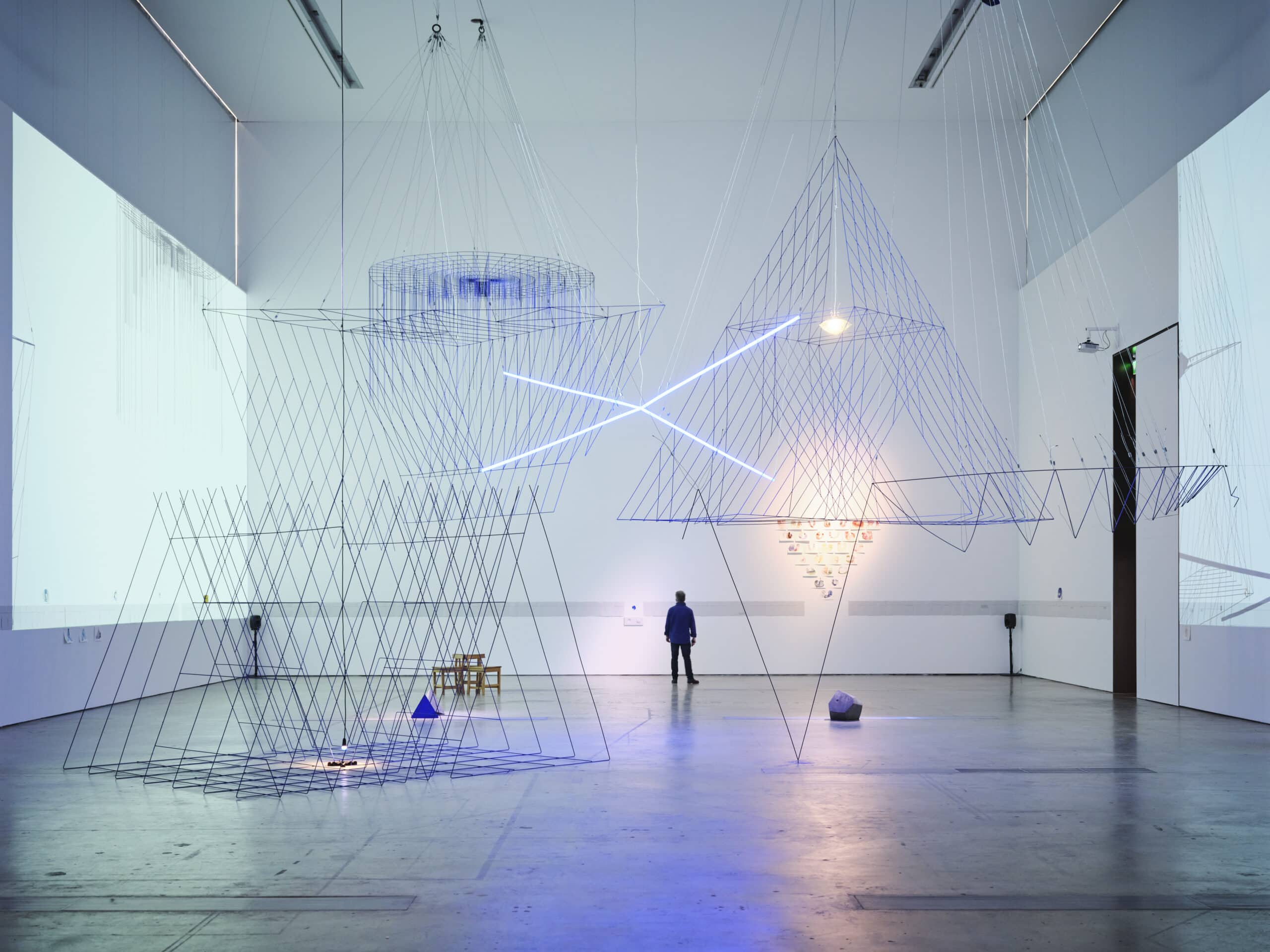
The vast room is fully used, its centre held by vast spaces made of grids and lines of steel bar. Some hang, others sit on the ground. Two projections occupy diagonally opposing flanks of the longer walls. Speakers mounted in each corner set a low basal vibrato. A datum is set around the perimeter, made by a prose poem printed on 360 sheets of A4 paper, mounted at Gagarin’s eye level. Each sheet is pinned at its top, leaving their bottom corners free to flutter and curl. I start out by reading this poem with my back to the room, moving clockwise about its perimeter. It tells the story of Gagarin, the launch and return. Snippets of his radio conversation are interposed with digressions – facts about the machinery, its inhuman velocity, architecture, about Gagarin’s body, its oxygen levels and pulse. Time is present, both in the story being told, that of Gagarin’s journey and return to earth, and in the speed of reading. People cluster, moving past one another, forming intimate encounters with the wall and each other. Here and there watercolours provide punctuation. The installation is full of resonant connection – knowing narratives and things sincere and nakedly innocent. The room is full of people gathered for the first time since Covid. Their shadows and the forms in the room make sharp relief against the text, and I turn back to the main space.
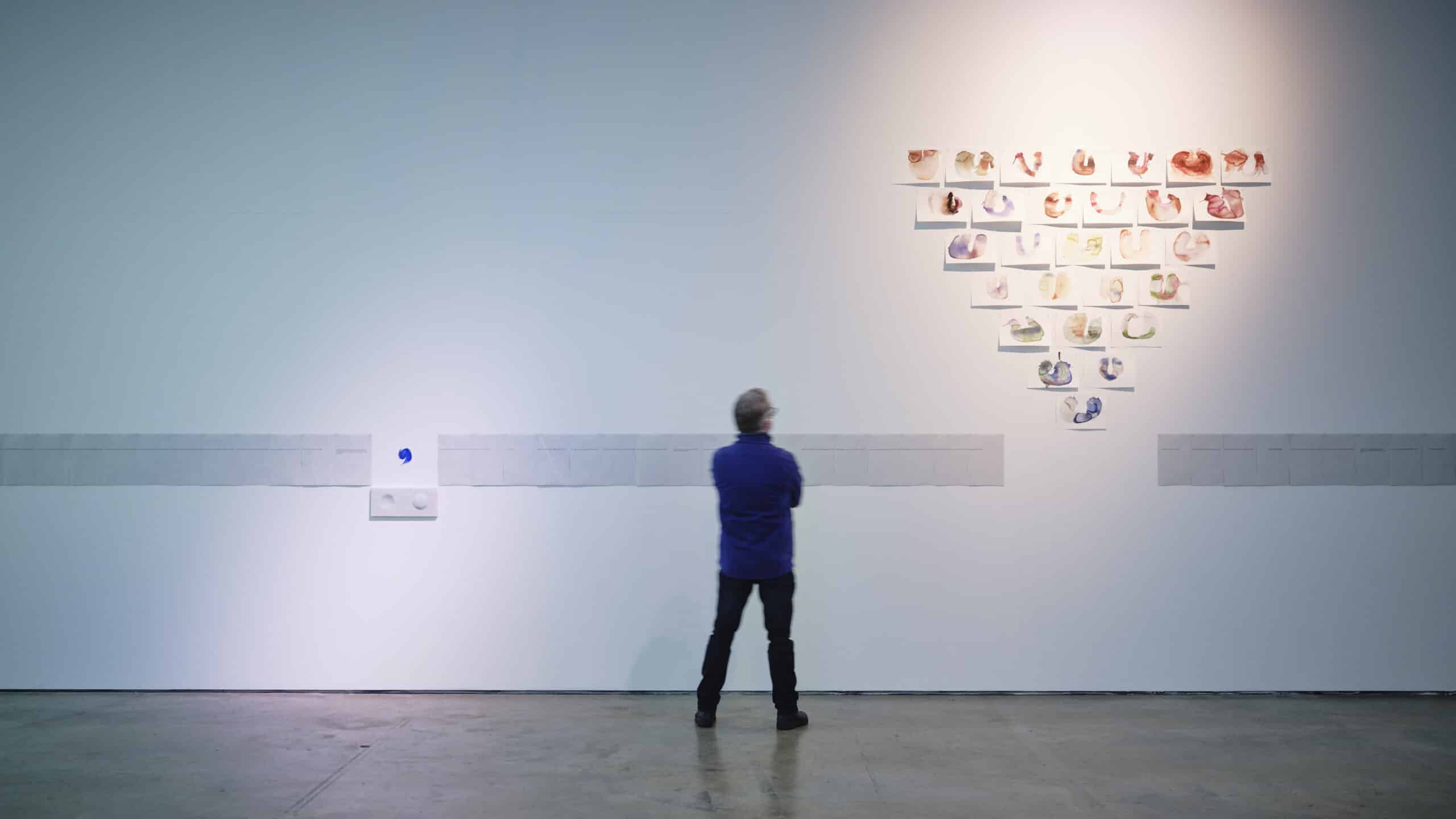
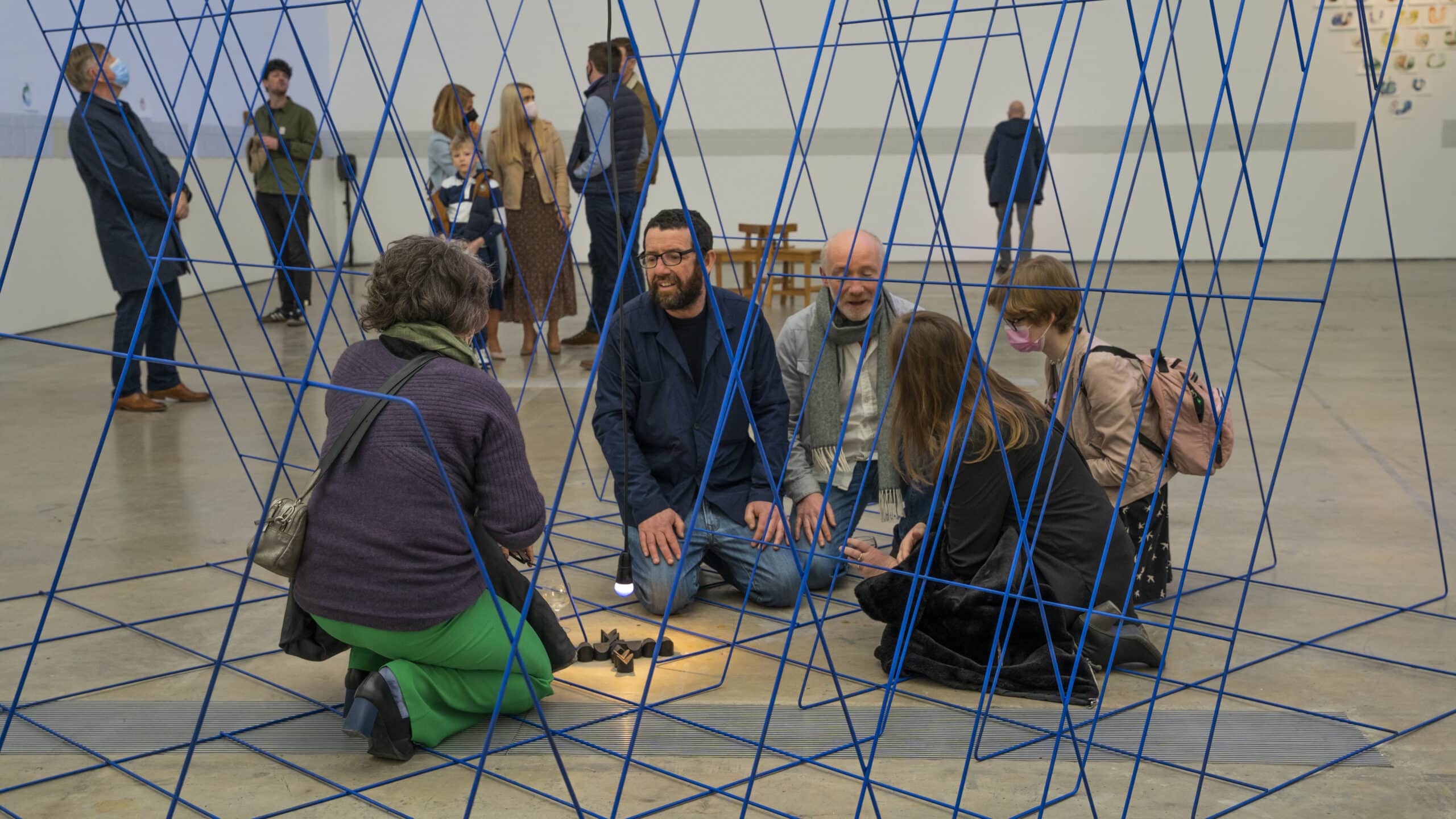
People are catching up, hugging. Conversations move from the work to the war in Ukraine. On one of the vast projections, I watch a machine squat over a stack of concrete blocks, tending to them like a bird on its eggs. The screen cuts to tyre marks left by heavy vehicles on a vast quarry floor. I remember the word ‘geometry’ means two things – the measure of the earth, and the measure of measure itself. Latent here is architecture’s own history – constantly walking this line between its autonomies and its fundamental interconnection with the world.
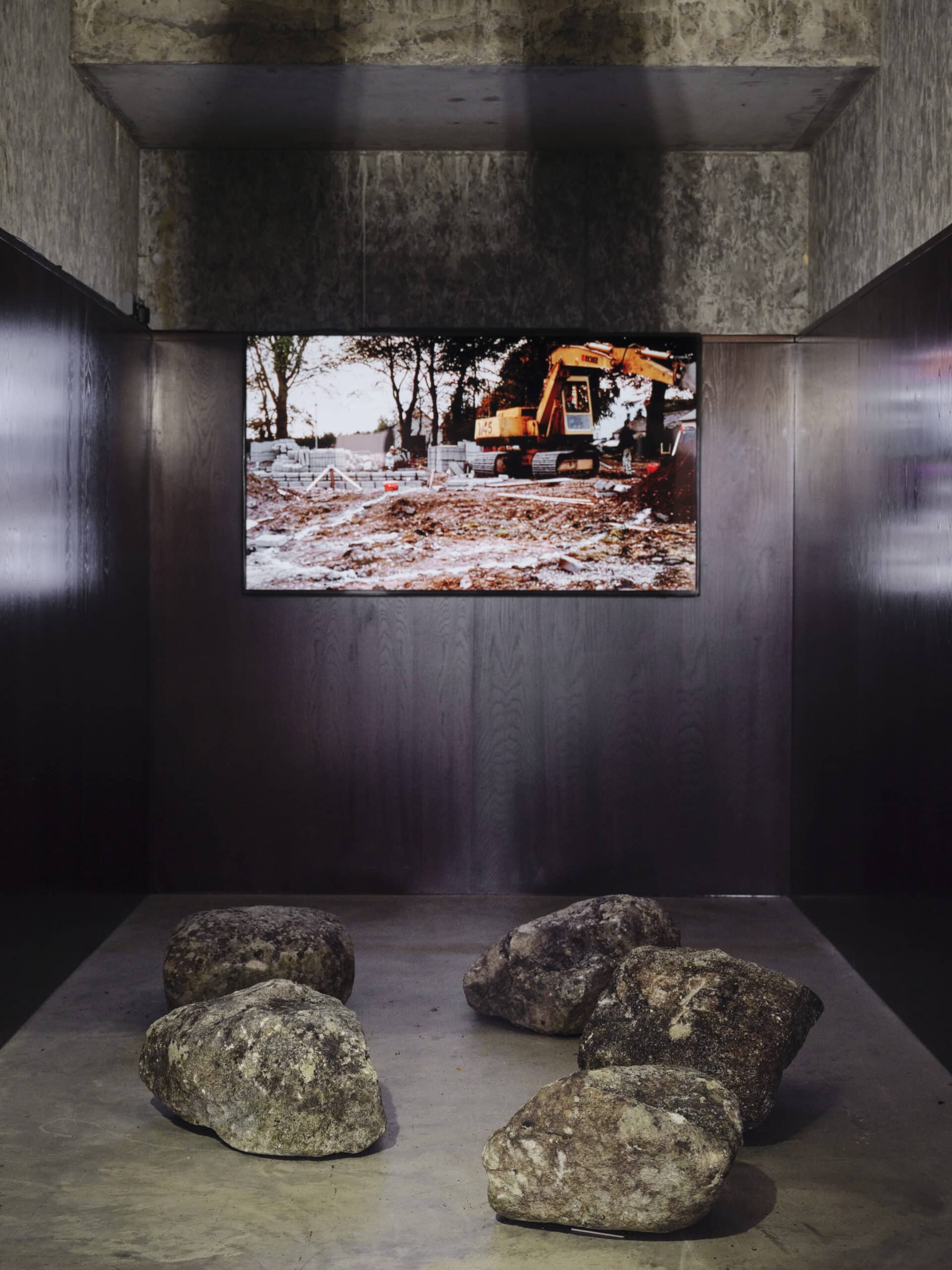
I recognise in the suspended forms some of Tom’s previous works – N3 is there, and 4am. Others differ in form and point at the narrative of the willow pattern plate, a popular decorative treatment of household ceramics from the late-nineteenth century and well into the twentieth. It tells in a single picture a mythological story of alienation, reconciliation, violence, and transformation. Upstairs Tom has made a room with VISUAL’s education department where children can draw their own willow pattern story. There are monsters, stories of Covid, balloons, and houses.
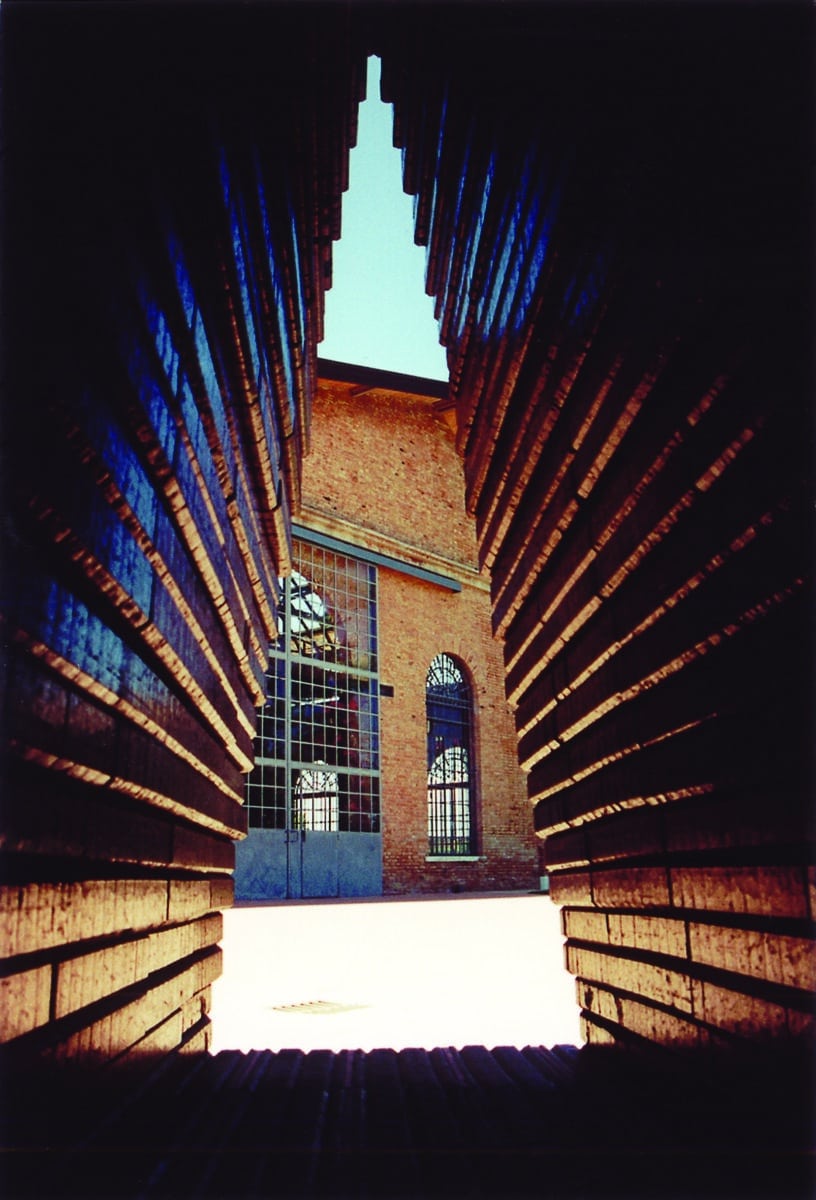
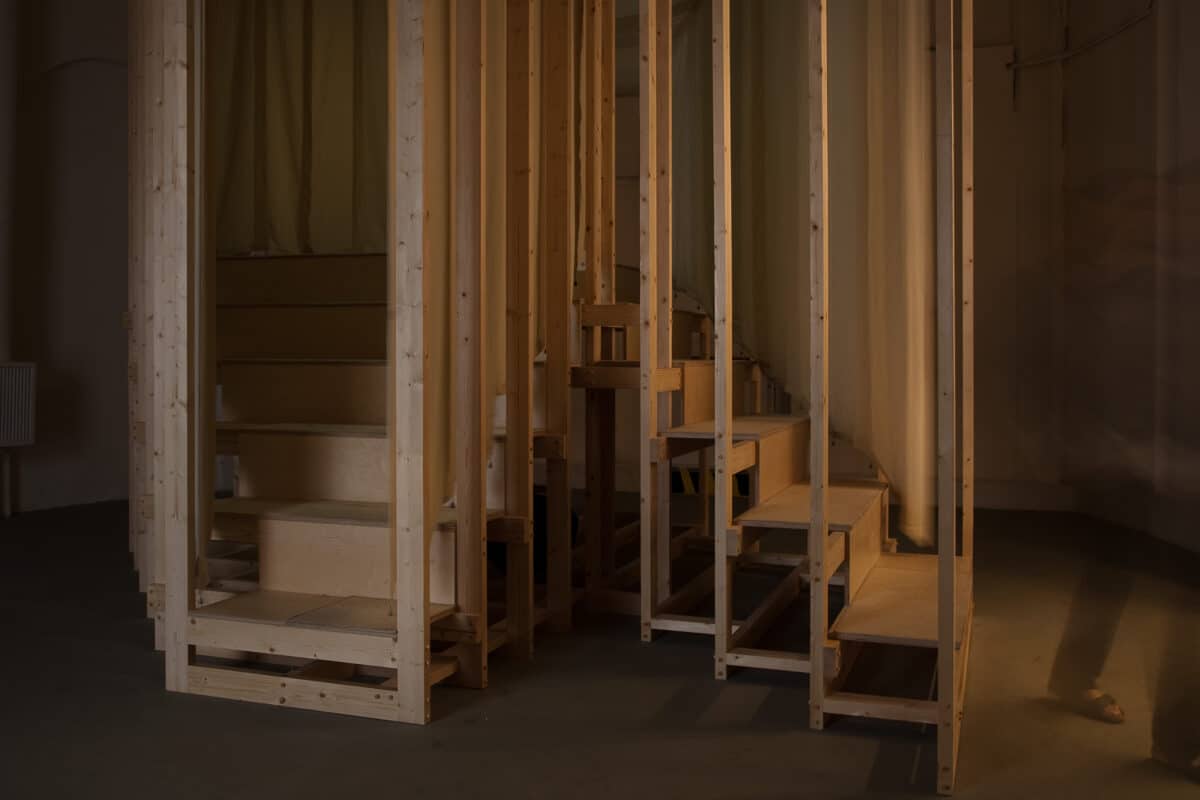
Returning to the main room it feels like a single thing. A vast axonometric – not in the narrow sense of its European manifestation, concerned with military abstraction, formal autonomy, and mechanistic resolution, but in its origins in China many centuries ago. The incredible axonometric scrolls of that time capture, without the collapse of perspective, an overview of society, people, time, and building. Each aspect can be considered apart, and together. So it is with this space – animated by its visitors, an even capturing of many things. It is a matter of deciding what details to attend to, what resonates.
This is a show about architecture and its possibilities. Or rather, it is a show about an architect, about thinking in practice, making sense of the world, finding meaning in a braiding of remembered and found things. It points at limits: the limits of our world, our bodies, our minds, and our capacity to communicate and be understood. It implies an unstated question about the limits of architectural practice. Its answer is that there are limits enough in the world that this question need not detain us. What matters is how we negotiate these contingencies, be it by making a building, or something more fleeting but no less valuable.
Architecture lives in the imagination and in the lives proximate to it. It lives and dies in those who practice it and those implicated in its gifts and failures. None of these are contradictions. Architects and architecture are rife with flaw, with frustration, with dreams and the joy of connection. There might be nothing more beautiful than to be fully understood by another, and applying this as a collective idea might be where the most powerful architecture sits today. Plural and fractured, a gathering of many things. Architecture investigates the making and remaking of the human habitat, its consequences and the stories we weave in doing, finding meaning in something at once so ordinary and exotic.
At some point I chat with Tom. As we walk around the room he talks of the willow pattern story, the geometry of the space, and all the nested narratives intertwined in the room, in other rooms, in him. He remembers an afternoon when the two of us picked images for the N3 pavilion playing cards – a project that was in the office when I was an intern there. I remember it dimly. A whirl of visual rhymes, stories of space and place. Myth and pun. I am not sure I contributed much. We pause at the edge of the room and look back at it and at the poem pinned on the wall beside us. ‘I guess I am asking for permission to be whatever I want to be’, he says.
He moves away at speed to speak to someone else and the unfixed edges of the pages on the wall flutter in his wake. He looks back, notices the breeze he made and laughs. ‘It’s a draft, it’s all a draft’. The sheet near me stills. It is one of the longer texts. A reflection on the letter ‘i’ as the first-person singular, as column and order, as Gagarin’s rocket and his spherical chamber at its tip. At the bottom, standing apart from the body of text is a single line:
‘I am the architect’.
‘i see Earth’, Building and Ground 1991–2021 is on show at VISUAL Carlow until 22 May 2022. The exhibition is curated by Nathalie Weadick and produced by VISUAL Carlow and the Irish Architecture Foundation. Full details here.

– Andrew Clancy and Colm Moore